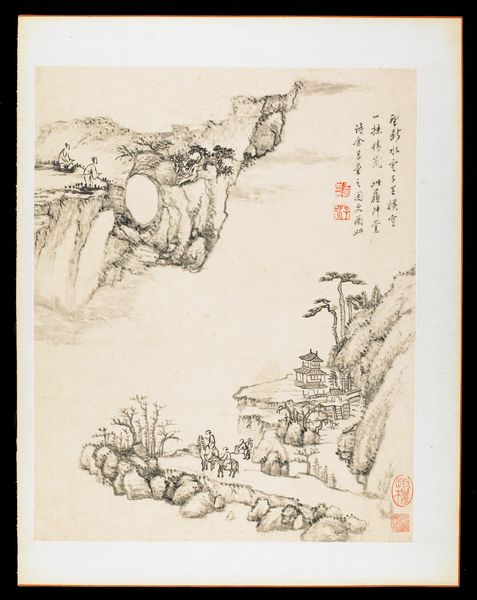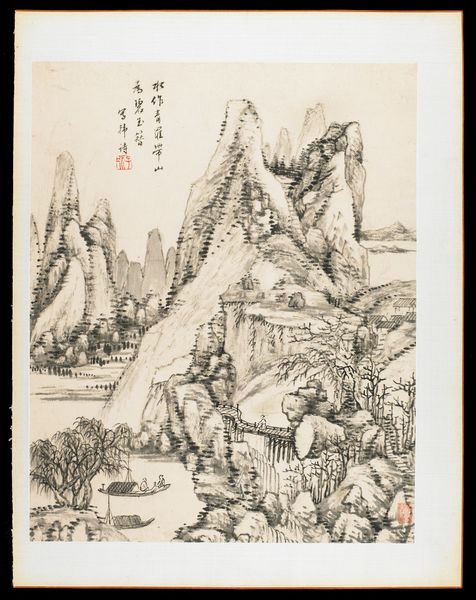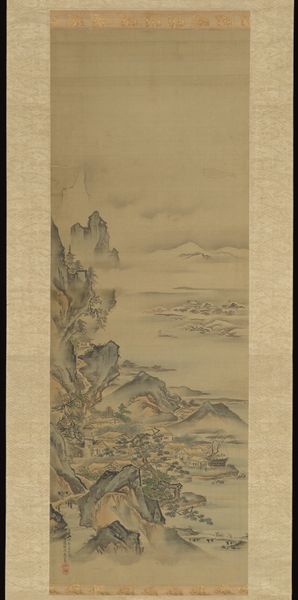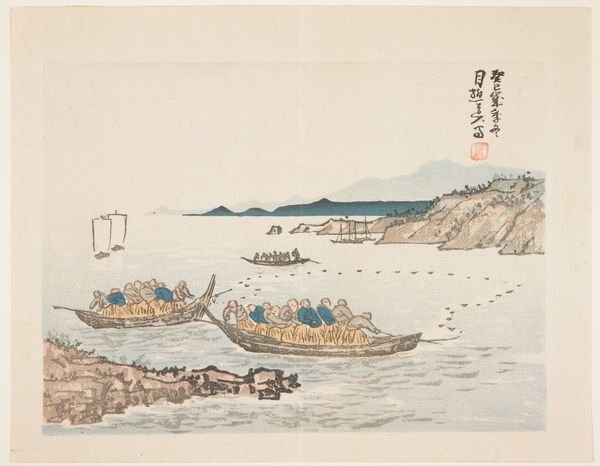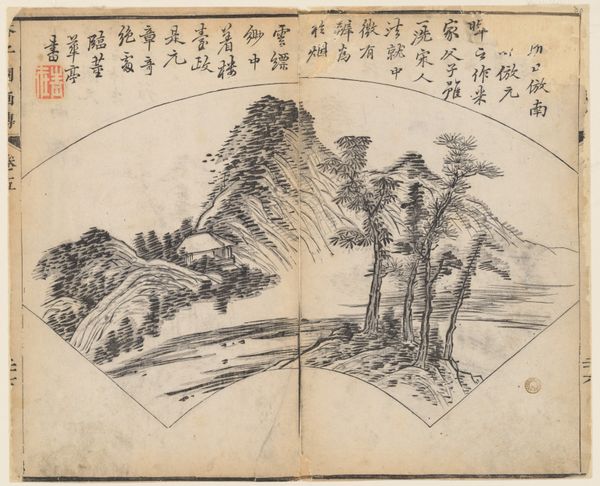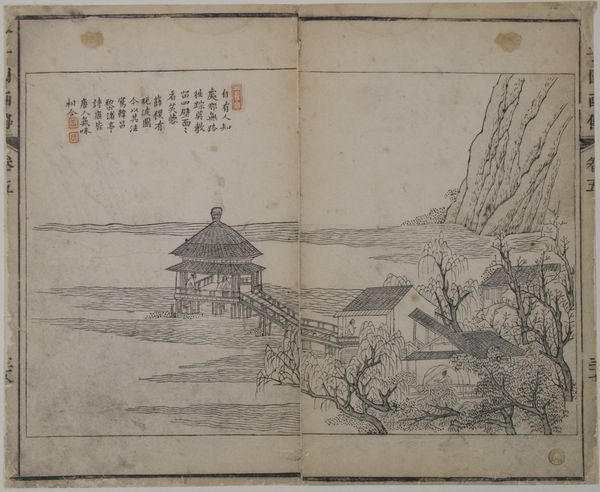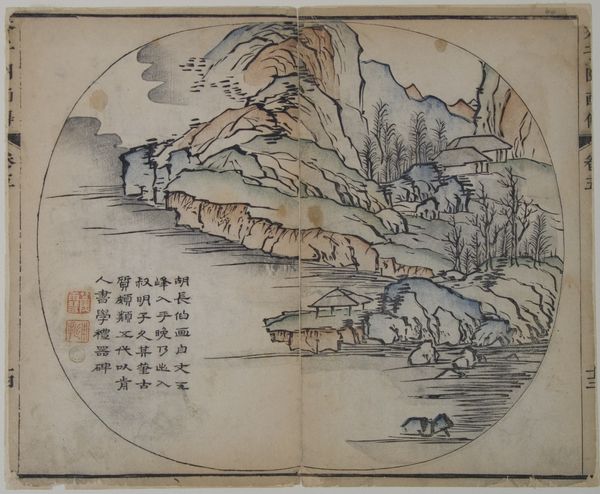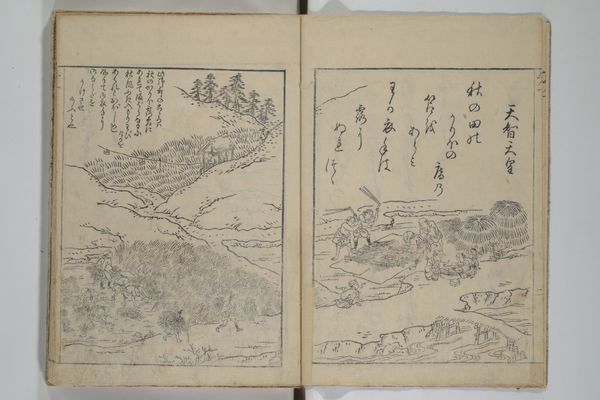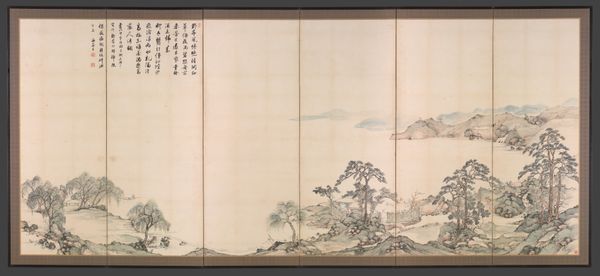
drawing, paper, ink, pencil
#
drawing
#
ink drawing
#
pen sketch
#
asian-art
#
landscape
#
paper
#
ink
#
pencil
#
line
#
calligraphy
Dimensions: 16 7/16 x 13 3/16 in. (41.75 x 33.5 cm) (image)19 3/4 x 15 5/16 in. (50.17 x 38.89 cm) (leaf, overall)19 15/16 x 15 15/16 x 1 1/4 in. (50.6 x 40.5 x 3.2 cm) (entire album, overall, closed)
Copyright: Public Domain
Wang Chen, working in China sometime in the 18th century, created this album leaf. It presents an idealised vision of a landscape, rendered in ink on paper, a traditional medium that carries its own cultural weight. Look closely, and you’ll notice the meticulous brushwork used to depict the mountains, trees, and buildings. These are not simply representations of nature, but are laden with symbolic meaning. The mountains, for example, often signify stability and longevity in Chinese culture, while the strategic placement of buildings could reflect social hierarchies and governance. During the Qing Dynasty, when Wang Chen was active, artistic expression was closely tied to the political and intellectual climate. Artists often used their work to subtly comment on the ruling powers or to express personal philosophies rooted in Confucianism or Daoism. Understanding Wang Chen's work fully requires delving into the visual codes and cultural references of his time. Researching the prevailing artistic styles, philosophical ideas, and socio-political events of 18th-century China would reveal the depth of meaning embedded in this seemingly simple landscape.
Comments
minneapolisinstituteofart about 2 years ago
⋮
Born in Kiangsu province, Wang Ch'en was a descendant of the great literatus Wang Shih-min and a great grandson of the artist Wang Yuan-ch'i. He served for a while in the Grand Secretariat and as a prefect in Hunan province. Wang's illustrious family heritage strengthened his reputation as an orthodox painter and he is one of the so-called Four Minor Wangs of the later Ch'ing. Wang's inscriptions here indicate that the basis for this album of large landscapes was the natural scenery of Ch'u, a Warring States (480-221 BCE) kingdom located south of the Yangtze River. In 1774, Wang was serving as a low-level official in this region. His inscriptions also mention earlier poets and painters whose conceptual and stylistic influences along with natural scenery inspired the various scenes here, which were based on sketches made at the sites themselves. The inscriptions read: 1) The landscape of Ch'u is extremely scenic. I came across one place and sketched it but neglected to ask its name. 2) One morning I entered the sea in search of Li Po; looking in vain among the paintings of mere mortals for the "Immortal of Ink." 3) The ceremonial burial mounds and Szechuan are neat. This is a scene of entering the gorge. 4) I have used the brushwork of Shu-ming (Wang Meng) to paint the style of Old Man Sung-hsueh (Chao Meng-fu). There is resemblance because they are from the same family.
Join the conversation
Join millions of artists and users on Artera today and experience the ultimate creative platform.
